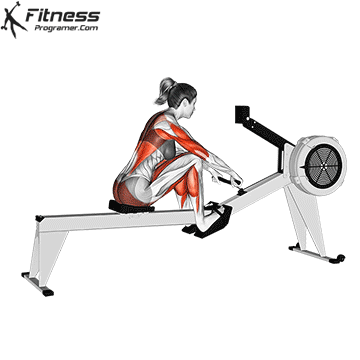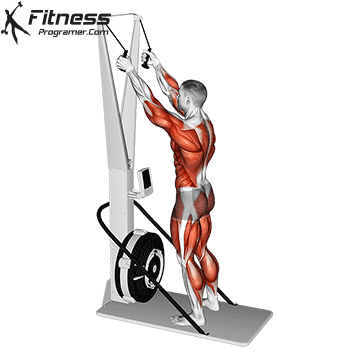Conditioning work is not one-size-fits-all. Athletes, fitness enthusiasts, and everyday gym-goers often wonder whether the rowing machine or the SkiErg provides the most efficient training stimulus. Both are low-impact, full-body machines that challenge cardiovascular endurance and muscular strength, but they differ in movement mechanics, muscle recruitment, and energy expenditure.
This article contrasts the two modalities to help you decide which one aligns better with your conditioning goals.
Rowing Machine Overview
When you sit on a rowing machine, the first thing you notice is the rhythm. Push with your legs, hinge at your hips, and pull the handle to your chest. Your quads and glutes light up almost instantly. As the sets drag on, your back and arms start to burn, and your lungs work overtime to match the pace.
Movement Mechanics
Rowing machines replicate the mechanics of rowing on water. Each stroke combines leg drive, hip hinge, and upper body pull, demanding coordination between lower and upper body segments.

Muscles Worked
- Lower Body: Quadriceps, hamstrings, glutes
- Upper Body: Lats, rhomboids, biceps
- Core: Abdominals and spinal erectors for stabilization
Conditioning Profile
Rowing emphasizes posterior chain power and muscular endurance while elevating heart rate. The leg drive is the primary force generator, making it a great choice for athletes who want to integrate lower-body strength with cardiovascular training.
Caloric Output
Research suggests that rowing at moderate-to-high intensity can burn 600–800 kcal/hour, depending on effort, resistance, and bodyweight.
SkiErg Overview
Each stroke feels like a powerful downward drive with ski poles, engaging your arms, shoulders, and core in a continuous cycle. Your triceps and lats start screaming far sooner than you expect. Unlike the rower, there’s no seated rest between strokes. Your core stabilizes every pull, and your arms fatigue long before your legs even notice they’re helping.
Movement Mechanics
The SkiErg mimics the double-pole technique of cross-country skiing. Each stroke involves pulling handles downward using the upper body, while maintaining a hinge at the hips.

Muscles Worked
- Upper Body: Lats, triceps, deltoids
- Core: Abdominals and obliques, heavily recruited for stability
- Lower Body: Hamstrings and glutes assist through the hinge, but less dominant compared to rowing
Conditioning Profile
The SkiErg prioritizes upper body and core endurance. It produces continuous tension in the lats and triceps, demanding stamina in muscles often neglected in traditional cardio modalities. This makes it particularly useful for athletes needing shoulder and arm endurance, such as fighters or skiers.
Caloric Output
High-intensity SkiErg sessions can burn 500–700 kcal/hour, with upper-body fatigue typically limiting duration compared to rowing.
Rowing vs. SkiErg: How They Compare
- Muscle involvement: The rower gives you a balanced, full-body workout. The SkiErg is punishing on the upper body and core, which makes it great for variety.
- Cardio stimulus: Both machines push your heart rate into high zones, but the rower allows longer sessions since your legs share the workload.
- Fatigue factor: On the rower, your lungs give out before your arms do. On the SkiErg, the reverse is true.
- Skill transfer: Rowing benefits general conditioning, CrossFit, and sports requiring lower-body power. The SkiErg carries over better to skiing, paddling, and combat sports.
Which One Should You Choose?
- Pick the Rowing Machine if: You want efficient full-body conditioning, higher calorie burn, or a machine that pushes both your lungs and legs to the limit.
- Pick the SkiErg if: You need upper body endurance, want a fresh challenge in your cardio training, or are preparing for sports that demand arm and core stamina.
In truth, they complement each other well. Using both in rotation prevents monotony and ensures you hit every major muscle group while keeping your conditioning sharp.
References


